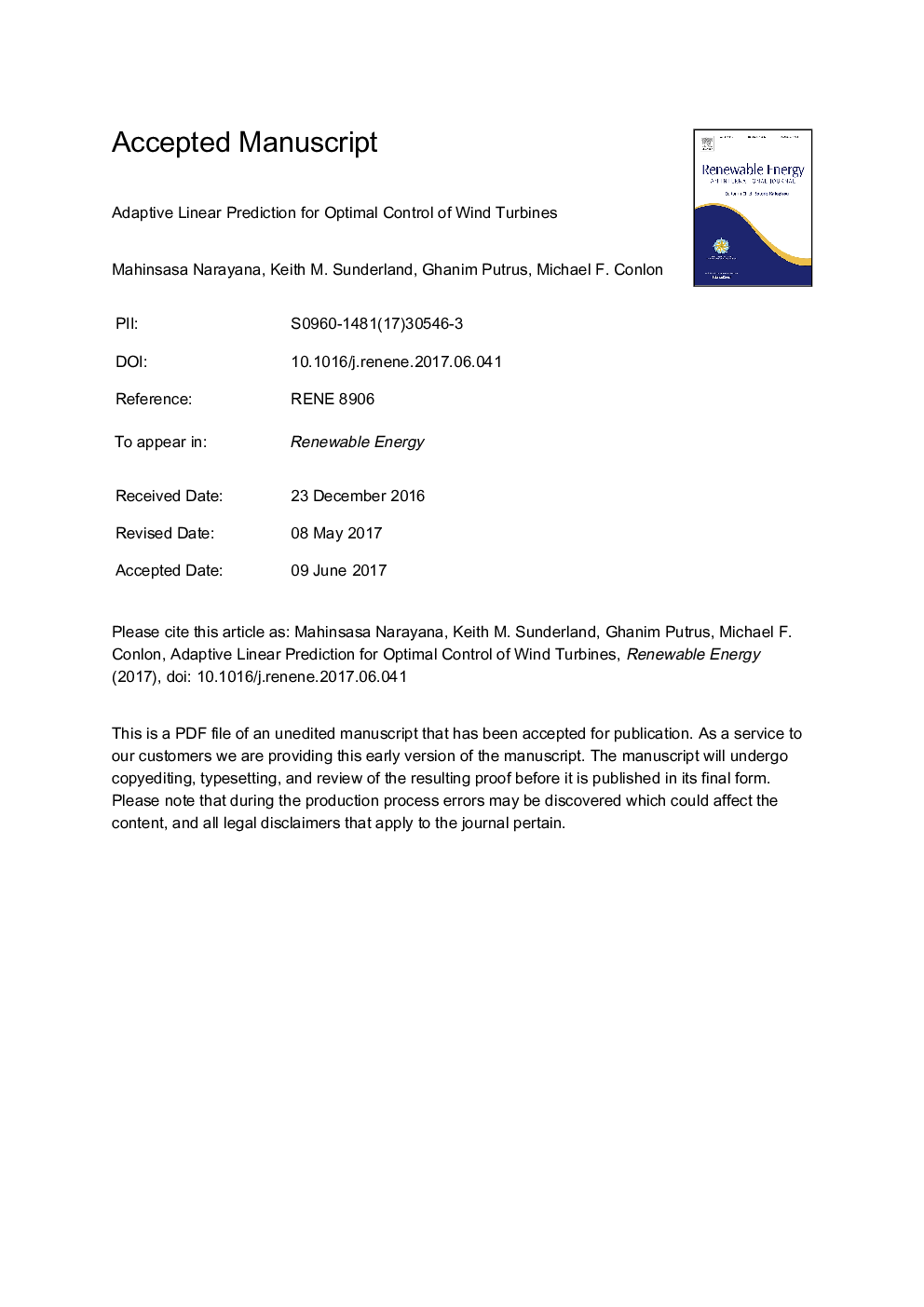| Article ID | Journal | Published Year | Pages | File Type |
|---|---|---|---|---|
| 4926081 | Renewable Energy | 2017 | 25 Pages |
Abstract
In order to obtain maximum power output of a Wind Energy Conversion System (WECS), the rotor speed needs to be optimised for a particular wind speed. However, due to inherent inertia, the rotor of a WECS cannot react instantaneously according to wind speed variations. As a consequence, the performance of the system and consequently the wind energy conversion capability of the rotor are negatively affected. This study considers the use of a time series Adaptive Linear Prediction (ALP) technique as a means to improve the performance and conversion efficiency of wind turbines. The ALP technique is introduced as a real time control reference to improve optimal control of wind turbines. In this study, a wind turbine emulator is developed to evaluate the performance of the predictive control strategy. In this regard, the ALP reference control method was applied as a means to control the torque/speed of the emulator. The results show that the employment of a predictive technique increases energy yield by almost 5%.
Related Topics
Physical Sciences and Engineering
Energy
Renewable Energy, Sustainability and the Environment
Authors
Mahinsasa Narayana, Keith M. Sunderland, Ghanim Putrus, Michael F. Conlon,
